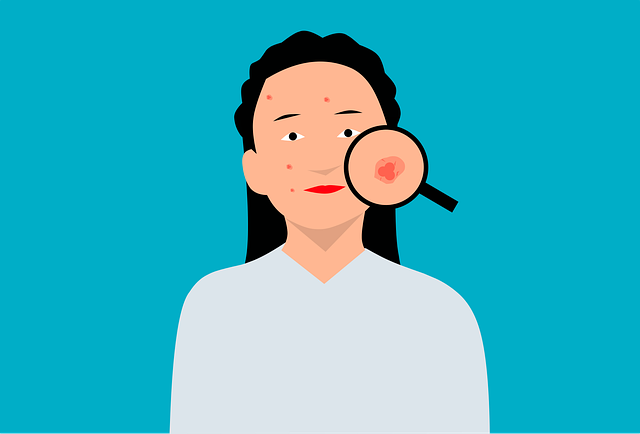Tretinoin vs Retinol: Which Is Right For You?

When it comes to combating signs of skin aging and acne, two ingredients stand out in the skincare world: Tretinoin and Retinol. Both are retinoids, a class of chemical compounds derived from Vitamin A, known for their remarkable effects on the skin.
They are must-haves for those seeking youthful and glowing skin, but how do you choose between them?
In this post, we’ll explore what Tretinoin and Retinol are, examine the pros and cons of each, and provide insights into how to make the best choice for your specific skin concerns.
What Are Retinoids?
Retinoids are an umbrella term for Vitamin A derivatives in skin care, and both Tretinoin and Retinol fall under this category. Retinoids have antioxidant properties that help neutralize free radicals in the skin, which contribute to skin aging and other skin concerns.

What is Tretinoin vs. Retinol?
Tretinoin
Tretinoin is a prescription retinoid. Unlike Retinol, Tretinoin is already in the active form of Vitamin A, also known as retinoic acid, which means it does not need to undergo a conversion process. This means it can directly interact with retinoic acid receptors in the skin, making it more potent and quicker to show results.
Retinol
Retinol is a retinoid that is commonly found over the counter. Once the topical retinoid is applied, the enzymes in the skin convert it to retinaldehyde first and then to retinoic acid — this is known as a two-step conversion process and is what makes Retinol a milder and gentler alternative to Tretinoin.
Retinol provides similar benefits, but often with less irritation than Tretinoin, making it a popular ingredient in many skincare products.
Mutual Benefits of Tretinoin and Retinol

Because Retinol and Tretinoin are both under the retinoid family, they contribute to many of the same wide-ranging benefits. They both:
1. Encourages Skin Cell Turnover; Sheds Dead Skin Cells
Retinoids encourage skin cell turnover, the process of our skin constantly regenerating itself. Old and dead skin cells shed away, and new cells from the deeper layers of our skin rise to replace them, giving our face a fresh, youthful appearance and a more even skin tone.
2. Slows Skin Aging
As we age, we experience a slowing of the collagen production in our bodies, a vital protein that maintains the skin’s structural integrity, elasticity, and resilience.
Retinoids can help boost collagen production, which helps reduce the appearance of sagging, fine lines and wrinkles.

3. Fights Acne
Tretinoin and Retinol can help treat acne by unclogging pores during cell turnover, which helps prevent breakouts and allows other products in your skincare routine to work better.
Additionally, these retinoids reduce sebum production, a substance typically found in individuals with oily skin that can trap bacteria and dead skin cells within our pores that lead to acne.
4. Fades Hyperpigmentation and Improves Skin Texture
Hyperpigmentation refers to the darkening of some areas of the skin, which can occur when there is an excess production of melanin.
Tretinoin and Retinol can help lighten these dark spots, age spots, and melasma by encouraging the shedding of pigmented cells through cell turnover and inhibiting melanin production — the result is a more even skin tone and refined skin texture.
Key Differences of Tretinoin vs Retinol
Tretinoin and Retinol have several mutual benefits, but there are differences between these two products, mainly:
1. Availability
Tretinoin is a prescription only in many places, while Retinol is over-the-counter.
2. Potency
While Tretinoin and Retinol offer many benefits to the skin, they differ significantly in their potency.
Tretinoin is already converted to retinoic acid and is more potent, while Retinol requires conversion, meaning it’s gentler on the skin.
Starting with a lower strength and frequency, then gradually increasing both, can help prevent side effects and improve your tolerance to these retinoids. However, you should always consult a healthcare professional or dermatologist before starting a new skincare product.
3. Concentrations

Tretinoin Concentration
Tretinoin is directly active once applied to the skin, so it works faster but may have more side effects than Retinol.
It’s available in many strengths, typically ranging from .01% to .1% for creams and gels.
Retinol Concentration
Unlike Tretinoin, Retinol needs to be converted first to start being effective. This two-step conversion process makes Retinol less potent than Tretinoin.
Retinol is available in concentrations as low as .01% to as high as 1% or even 2%.
Comparison of concentrations and usage
Please remember that retinoid reactions can vary from person to person, and what works best will depend on an individual’s skin conditions, concerns, goals, and tolerance. Below is a reference chart to get a general idea of concentrations and usage; however, you should consult a medical professional before using retinoids.
| Strength | Retinol Concentration | Tretinoin Concentration |
|---|---|---|
| Low | .01%-.03% Best for first time users with mild anti-aging concerns | .0025%-0.025% Best for first time users of Tretinoin |
| Medium | .04%-.5% Best for individuals with moderate anti-aging concerns and with some experience with retinoids | .025%-0.05% Best for individuals with moderate acne or anti-aging concerns and have some experience with Tretinoin |
| High | .5%-1% Best for individuals who are familiar with retinoid reactions and significant anti-aging or acne concerns | .05%-.1% Best for individuals with severe acne or pronounced anti-aging concerns and experience with Tretinoin |
4. Side Effects
Please remember that reactions to these products can vary per individual. It’s always best to consult a dermatologist and patch test when uncertain.
| Side Effect | Tretinoin | Retinol |
|---|---|---|
| Irritation | Stronger chance for irritation and allergic reaction leading to pronounced redness, dryness, and peeling. | Chance of mild irritation with less severe redness, dryness, and peeling when compared to Tretinoin. |
| Acne | Acne may worsen initially. | While rare, some users might experience a mild initial breakout. |
| Sun Sensitivity | Higher sensitivity to sun, increasing the risk of sunburn. | Sensitivity to the sun but to a lesser extent than Tretinoin. |
Retinol and Tretinoin During Pregnancy

Retinol and Tretinoin should be avoided during pregnancy and breastfeeding.
Some studies have shown that high doses of Vitamin A derivatives can have effects on the fetus in animals. Although there’s limited evidence of these effects in humans, the concern still warrants caution.
Consulting with a healthcare provider if you are pregnant or nursing is always advised.
Interactions with other products and ingredients
As a general rule of thumb, introduce one new skincare product at a time to gauge how your skin reacts. If you’re concerned about potential interactions, try alternating the nights you use different active ingredients within your routine.
The list below provides common interactions with Tretinoin and Retinol. However, it’s not an exhaustive list, so please consult with a dermatologist about any concerns or questions.

AHAs, BHAs, and Benzoyl Peroxide: May amplify the risk of irritation, redness, and peeling.
Vitamin C (Ascorbic Acid): Can lead to increased sensitivity or irritation. However, some individuals use Vitamin C in the morning and retinoids at night.
Other Retinoids: It’s best not to combine multiple retinoid products as this can increase the risk of side effects without additional benefits.
Alcohol-based products: Can increase the risk of side effects when used with Tretinoin.
Certain Antibiotics: Some topical antibiotics used for treating acne can be combined with Tretinoin. However, others might lead to increased skin dryness and irritation.
Products with High Concentrations of Niacinamide: High concentrations of niacinamide can cause flushing and redness when used with Tretinoin.
Over-the-counter acne treatments: Some ingredients that treat acne, such as Salicylic Acid, can irritate the skin when used with Retinols.
How to Apply Tretinoin or Retinol

If it’s your first time using Tretinoin or Retinol, you should ease into their use. Start by applying the retinoid around 2-3 times a week before bed, and gradually increase to nightly as your skin adjusts — slower introduction may be necessary for people with sensitive skin.
It is usually recommended to use Tretinoin or Retinol at nighttime.
Cleanse: Use a gentle cleanser to wash your face thoroughly to ensure your face is free of makeup, dirt, and excess oil; then, pat with a soft towel to dry.
Wait: Allow 20-30 minutes for your skin to completely dry.
Apply Tretinoin or Retinol: Apply a pea-sized amount of Tretinoin or Retinol to your face — using more won’t necessarily improve its efficacy, and it may increase the risks of irritation.
Moisturize: Wait a few minutes, then apply a moisturizer to help reduce dryness and peeling. Note: Some people do this step before applying Retinol or Tretinoin during the initial stages of use to help reduce irritation.
Tretinoin vs. Retinol: Which is Right for You?
If choosing between these two options, making a decision that meets your unique needs is essential. Both Tretinoin and Retinol can help with acne, anti-aging, texture, uneven skin tone, and hyperpigmentation.
However, Tretinoins will work faster and are more potent, while Retinols will take more time to see results but are less irritating.
Consider some of the factors below:
Skin Type & Sensitivity
Strength & Results
Prescription vs. Over the counter

Skin Type & Sensitivity
If you have sensitive skin, have never used a retinoid, or have specific skin conditions, you might want to start with a lower-strength retinol.
If you have more tolerant skin or have used Retinol before and want something more potent, a Tretinoin might be a good next step.
Strength & Results
If you’re looking for quick results and rapid changes, Tretinoin might be a better option.
If you want a more gradual improvement with less initial skin irritation, consider using Retinol.
Prescription vs. Over-The-Counter
Tretinoin often requires a prescription.
Retinol is available over the counter.
Summary

Tretinoin (prescription medication) and OTC Retinol (over-the-counter) are both derivatives of Vitamin A that serve as prominent options in a skincare routine. Though these topical retinoids are related, they offer different benefits and potential drawbacks that can cater to different needs.
Tretinoin is a prescription-strength solution that acts quickly and potently, which is especially useful for severe acne treatment or significant signs of skin aging. It can be more effective but often comes with higher costs and the potential for skin irritation.
Retinol is an over-the-counter option that provides a gentler approach for mild to moderate concerns. While generally easier to access and less likely to irritate, it may take longer to see noticeable results.
The choice between these topical retinoids requires careful consideration. Consulting with skincare professionals is often essential in making the most appropriate decision.
Finally, while both Retinol and Tretinoin have several benefits, using these topical retinoids simultaneously is not advised. They perform similar functions, and their combination can increase irritation and complexity without added benefits.
The decision between these topical retinoids depends on individual needs and preferences, and understanding their unique characteristics is vital to making an informed choice.
Sources:
We aim to provide accurate, data-based, and evidence-based information. Below are reputable sources, research studies, and insights referenced in this post. These aren’t just to validate the claims in this blog post; they’re also linked here if you want to dive deeper into each scientific topic. When you read our content, we hope you feel confident knowing it has been researched and validated to keep our information reliable.

